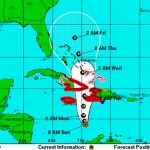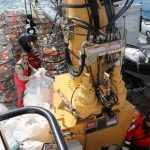Three Sites Under Study (Siege) As Marine Sanctuaries in Waters Off Vineyard
 An Island-based group that includes fishermen ( a very loose term), a documentary filmmaker and a world-renowned oceanographer are leading an unprecedented effort to create three marine protected areas in waters south of the Vineyard. Read more here (boston globe photo) 09:40
An Island-based group that includes fishermen ( a very loose term), a documentary filmmaker and a world-renowned oceanographer are leading an unprecedented effort to create three marine protected areas in waters south of the Vineyard. Read more here (boston globe photo) 09:40

















































More of the same ,”something has got to be done about….”. I see yet another group of people with too much money and too much time on their hands. How many times do we have to hear this same story. Where were you when the leases came out for wind energy, etc. Now you want Marine sanctuaries on top of all that !! You people need to get a grip on reality. I had some respect for Dr. Earle before this clown show endorsement, no more soup for you Dr. I think all that dive air has effected your thought process. And you Buddy, what a turn coat fraud you have turned into, how many female Stripers have you shipped to market or doesn’t that count now that your are a pimp to the rich and not so famous. I hope you get bitten by a rat when you are sucking up to you cute new pals. Maybe they’ll pick up the tab for you if you keep dancing and singing their tunes !!
It’s amazing and how so much wrong information can get
crammed into one short article. But just in case there are some people interested in more accurate information, I will do my best to pass some on.
“…these trawlers, they’re just hammering everything.” Well no, simply not true. The boats fishing off of the Vineyard this summer were local (mostly Point Judith, RI) independent family owned fishing vessels. They are working on Squid, a very tightly controlled fishery, in fact trimester II quota has been reached last week and the fishery has been shut down. In addition to the Squid these vessels were permitted 100Lbs. of Fluke per trip—that’s it, not much more, maybe a handful of Whiting were landed from these trips. That’s not exactly “just hammering everything”.
Ms. Earle, “the industrial extraction of ocean wildlife” by commercial vessels in nearby waters. “They are taking too much and destroying habitats in the process,” she said – I’m sorry to differ with you Your Deepness, but New England groundfish have been underfished for years due to mindless regulations based on inaccurate and incomplete surveys and very sloppy science. On average the landed groundfish catch is a paltry 25% to 40% of the NOAA scientists’ sanctioned Total Allowable Catch yearly.
It’s not underfished due to lack of fish either, studies by UMass School for Marine Science and Technology, Mass. Fisheries Institute, College of William and Mary’s Virginia Institute of Marine Science, have surveyed the yellowtail Flounder for instance and found that NOAA is working on data that shows only a fraction of the fish found by these cooperative vetted assessments (NOAA since 2009 has refused to consider at least three studies that happen to contradict their data).
In terms of destroying habitat there are studies that show biodiversity and fish populations are actually enhanced by fishing especially bottom trawling; and in addition studies show that the dynamic bottom quickly recovers from any trawling effects. Most boats these days are using semi-pelagic trawl doors that have little contact with the bottom and the net does not dig the bottom but skips along it causing the fish to rise and fall back into the net; so really we are not destroying the habitat—that’s just another Frank Luntz type anti-fishing talking point.
To read up on various studies concerning trawling effects on the bottom please see (http://www.savingseafood.org/conservation-environment/analysis-conservation-law-foundation-misleads-public-on-habitat-closed-area-open-2.html)
Fishing is regulated under the Magnuson Stevens Act
Reauthorization 2006 and is up for another Reauthorization this year. Not exactly “…policies that were set in motion when we thought the ocean was too big to fail, that our job was to take as much as we could as fast as we could.”
The industrial destruction of ocean wildlife that you
might divert some of your energy and funding towards are the (200) 650 foot tall wind turbines slated for RI Sound right off your island and the oil companies’ seismic blasting just approved, a prelude to oil and gas rigs in the area.
Marine Protected Areas have not demonstrably helped the fish or the environment. Areas on Georges Bank have been closed for 18+years as well as the Nantucket Lightship Closed Area preserved for over 20 years. The latest NEAMAP inshore survey has found healthier and more plentiful aquatic life outside the area than inside.
The U.S. fisheries are the most stringently regulated in
the world. Actually, thanks to a privatization and commodification regulatory scheme called “catch shares”, New England and the Mid-Atlantic have lost 80% of their fishing fleet over the last two decades. These are not market-capitalized corporate factory ships; these are weather-dependent, range-restricted, family-funded, local small boat fishing operations. They are generational icons and vital to a sense of place and identity in these coastal fishing ports and communities.
These are local small businesses and with their land based support operations employ thousands and feed millions with the lowest carbon footprint per pound of the healthiest cleanest protein on the planet. And like too many of our family farms, many fishing vessels and businesses are already gone and are never coming back.
A commercial fisherman catches fish to supply food for
people who cannot afford to charter a boat with a captain guide. Nobody has more at stake when it comes to healthy fish stocks.